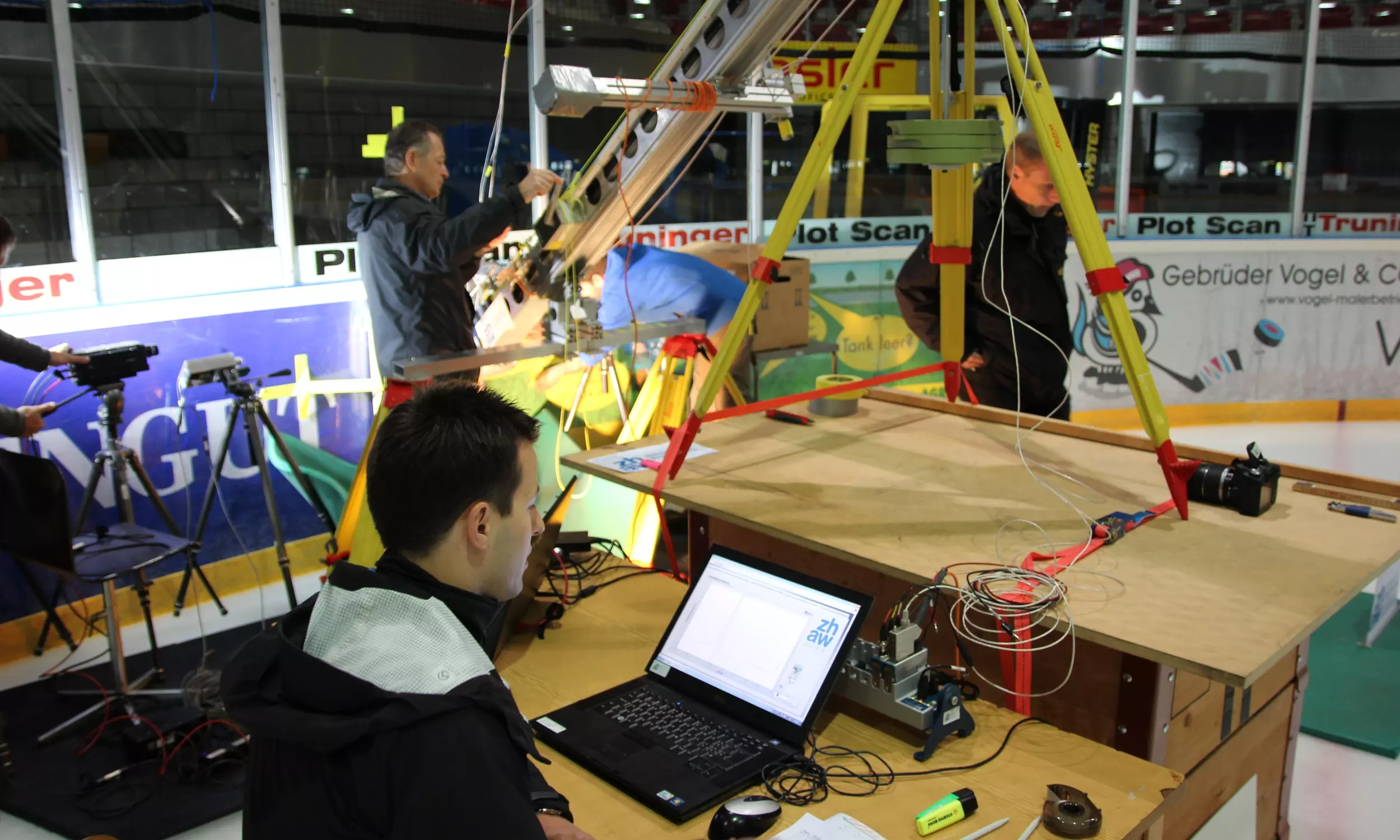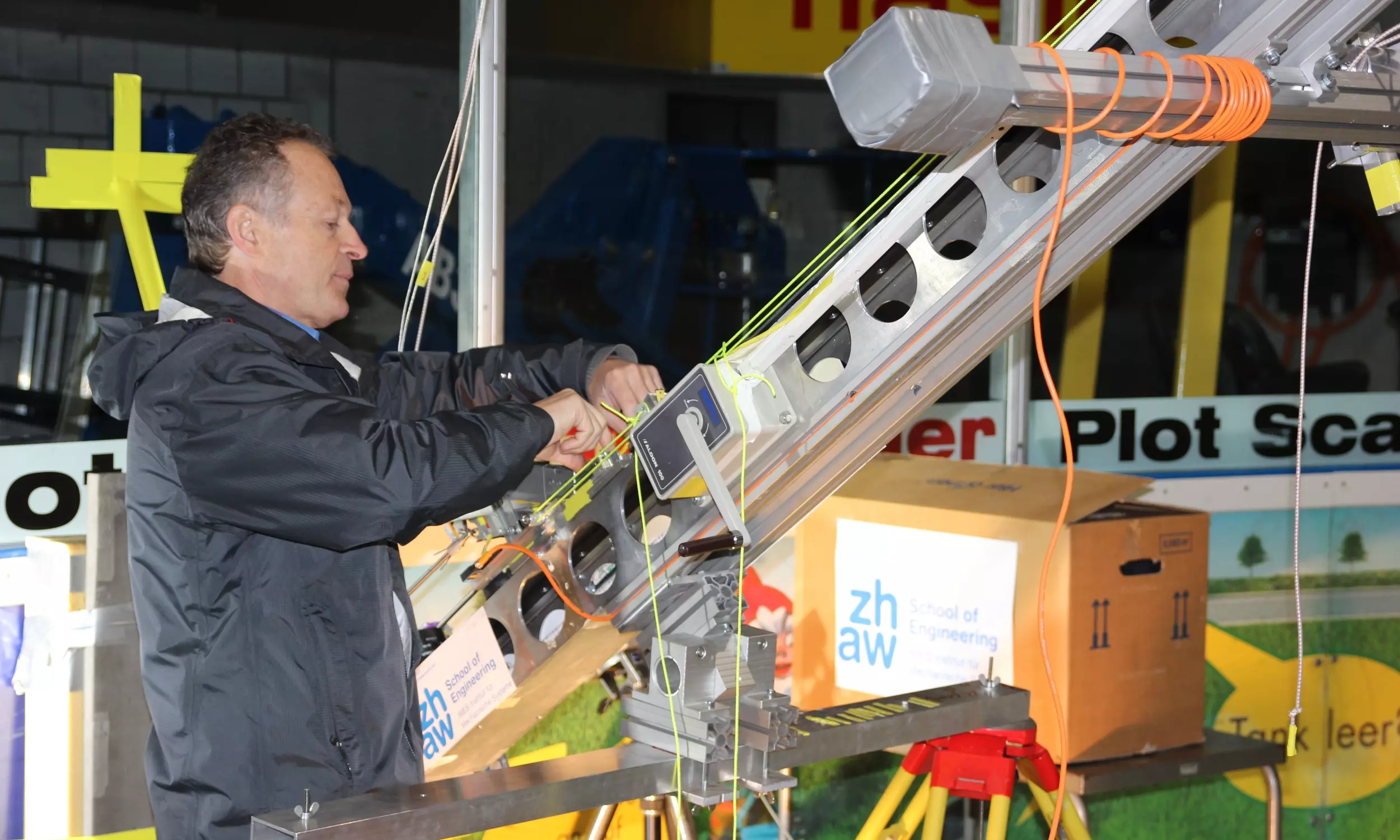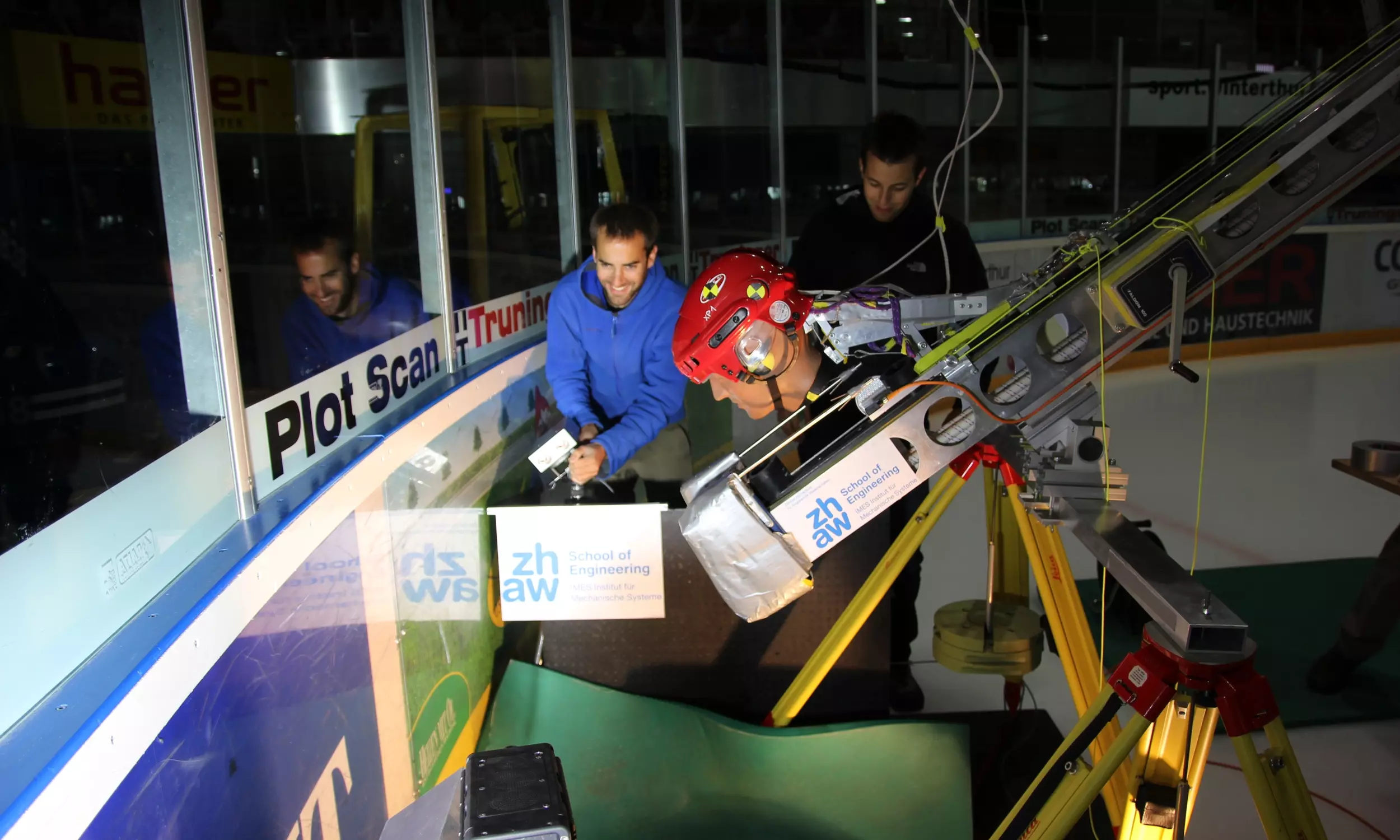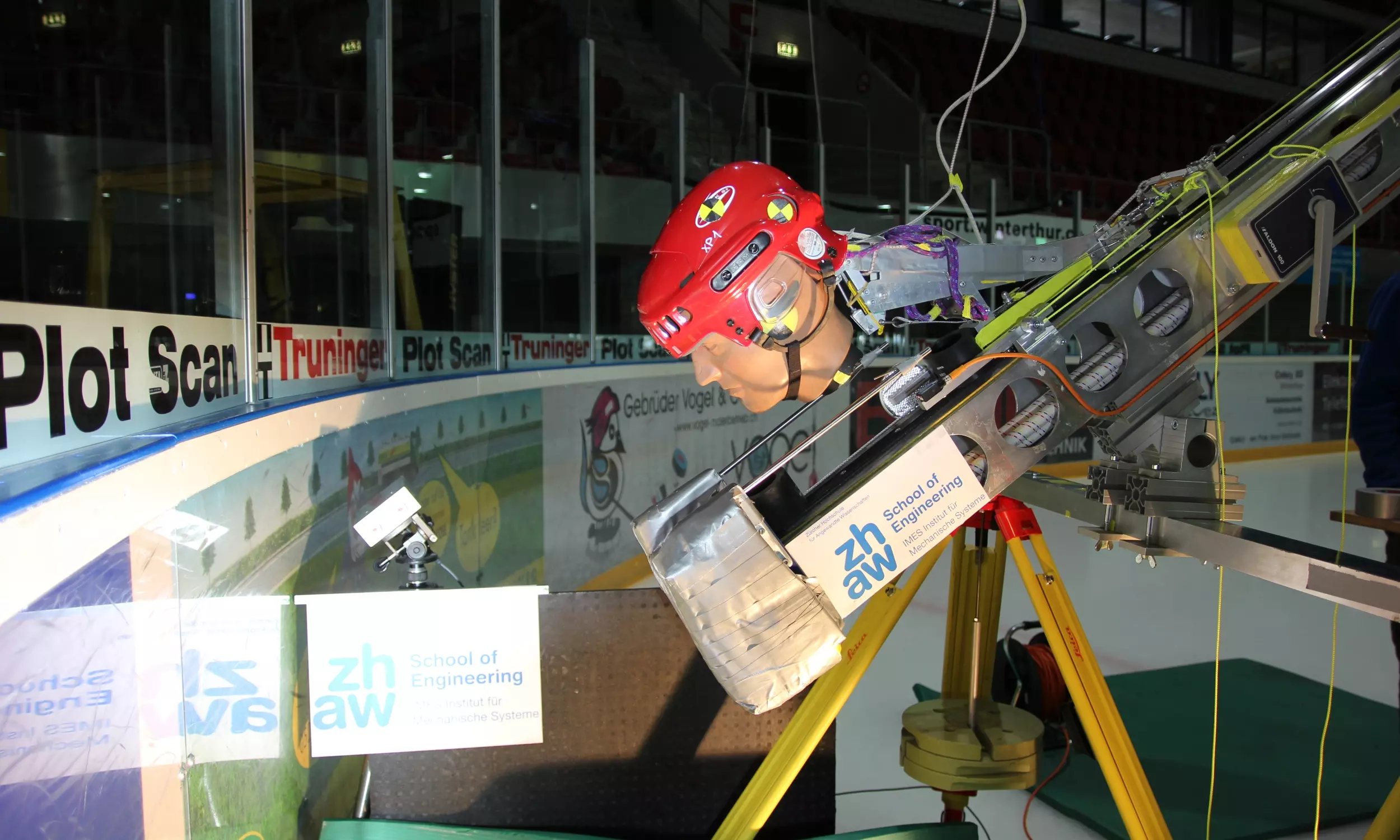Illustrative project: crash simulation
Ramming your head through a wall
One of the tasks the Institute of Mechanical Systems (IMES) has set itself for its research into light-frame construction is to find ways of reducing the risk of traumatic head injuries. Besides contributing to successful international development projects in the fields of automobile and aircraft construction, the IMES also carries out sports research. Its analysis of the potential dangers posed by ice hockey pitch boundaries is one example.
In aggregate, some 30,000 participants in Swiss amateur and professional sports suffer concussion each year. While such injuries were previously regarded as trivial, it is now known that even a mild concussion can cause changes to the brain’s metabolism. Ice hockey is a sport with a notably high risk of head injury. Players are constantly colliding with the boundaries of the rink, sometimes sustaining major injuries. The Institute of Mechanical Systems (IMES) has carried out in-depth research into the dangers ice hockey boundary boards pose for players and has developed special apparatus for quantifying the risks involved.
Tests for automobile and aircraft construction
The IMES has many years of experience in building simulators which provide precise measurements of the forces which come into play when a crash occurs. “We have, for example, already analysed the dangers posed by the cabin-separator walls in aircraft,” explains IMES’s Professor Hanfried Hesselbarth. “These walls need to be as compliant as possible in order to avoid causing fatal injury in the event of an emergency landing.”
The Institute has also carried out research for the automobile industry. Many years ago, it was already involved in the design of car bonnets, helping to develop features which are now industry standards. The IMES has even tested aeroplane cockpits, to ensure that they meet the strict safety standards set by the aviation industry.
Rail outperforms pendulum
The ice hockey project began when the IMES was approached by a manufacturer of boundary boards that wanted its product tested prior to further development. Detailed tests using dummies on ice hockey rinks were carried out and their results analysed. Initially, the dummies were attached to a pendulum. However, as Hesselbarth explains, “The pendulum approach proved less than ideal, because the pendulum also tended to swing slightly from side to side, thus distorting the test results.” Based on that experience, the IMES then opted for a rail-based structure. An advantage of this approach is that the dummy can be accelerated in a straight line. The dummy is accelerated along the rail towards the boundary board. On leaving the rail, it collides with the board at the speed specified for the test. The measurement system calculates the forces to which the dummy is subjected on impact and can thus provide an indication of the injuries which a person would have suffered in those circumstances.
“While this manufacturer’s boundary boards are already a significant improvement on conventional constructions, they can still cause severe injury in some situations.”
Professor Hanfried Hesselbarth, Project Manager
Scope for certification procedure
A recent episode of Swiss Television’s Einstein documentary programme showed new measurements being carried out with the rail-based structure. This time, the tests were being conducted for a board manufacturer from South Tirol, whose innovative boundary boards are designed to be substantially safer. “While this manufacturer’s boundary boards are already a significant improvement on conventional constructions, they can still cause severe injury in some situations,” was the conclusion drawn by Hesselbarth and his team. “The handrail is a particular danger for the players, as are the areas where posts and struts are concealed behind the board itself.” While the IMES test results can be expected to influence future boundary board development, general awareness of the risks involved in ice hockey remains limited. However, should the ice hockey associations set new standards for boundary boards, Hesselbarth believes they would find an ideal partner in the IMES, since the Institute’s measurement equipment could become an integral part of the certification procedure.



